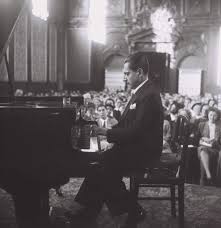Go see the Great Wave, as seldom seen before
mainThe British Museum has put on display one of the finest surviving impressions of the famous Japanese print Under the Wave, off Kanagawa (Kanagawa oki nami-ura), also known as ‘The Great Wave’, designed by Katsushika Hokusai around 1831.
Musically, it is best known as the most-used cover of Debussy’s La Mer.
The BM has kindly allowed me to share a low-res copy of the image, which has just gone on display in Room 3. Admission free. Enjoy
Here’s the press release:
Hokusai’s Great Wave
3 November 2011 – 8 January 2012 Room 3 Admission Free
Under the Wave, off Kanagawa (Kanagawa oki nami-ura), also known as ‘The Great Wave’ is surely the most famous Japanese print and one of the most iconic images in the world. The British Museum has in recent years acquired one of the best surviving impressions of this print through the generous support of the Art Fund. The print can be seen in Room 3 this winter; a rare chance to see it on public display due to its sensitivity. Designed by the artist Katsushika Hokusai in about 1831 and published as a popular colour wood-block print, ‘The Great Wave’ was one of the 100 objects in the British Museum and BBC Radio 4 series A History of the World.
Around 5,000 to 8,000 impressions of the Great Wave were printed from the original wood-blocks in the early 1830s, and several hundred of these still exist today. The British Museum’s new impression is a fresh early one, with sharply printed lines and well-fitting colours. On present evidence it is likely that this is one of the top twenty impressions to have survived. The design expresses Hokusai’s wit and ingenuity in addition to the sheer graphic power of the artwork. Mount Fuji should be the highest thing in Japan but it is apparently dwarfed by the wave, and foam from the tentacles of the wave seems to fall through the sky like snow onto the mountain peak. The image has become emblematic of the power of the sea.
Although ‘The Great Wave’ is often seen as typically Japanese, it mixes influences from both east and west. Hokusai’s imagination was captured by his discovery of European-style perspective that he saw in paintings and prints by adventurous Japanese artists of that day. The Great Wave, designed when he was about seventy, absorbs these influences from Western art but makes something much more powerful and symbolic from them. Japanese prints were also discovered with excitement and emulated by Western artists such as Whistler, van Gogh and Monet from the 1860s onwards. By 1890, the Great Wave had been singled out for particular comment and its fame has grown ever since.
The display will look at the Great Wave’s continuing influence today and at how Hokusai’s vision has inspired artists from across the world.






Comments